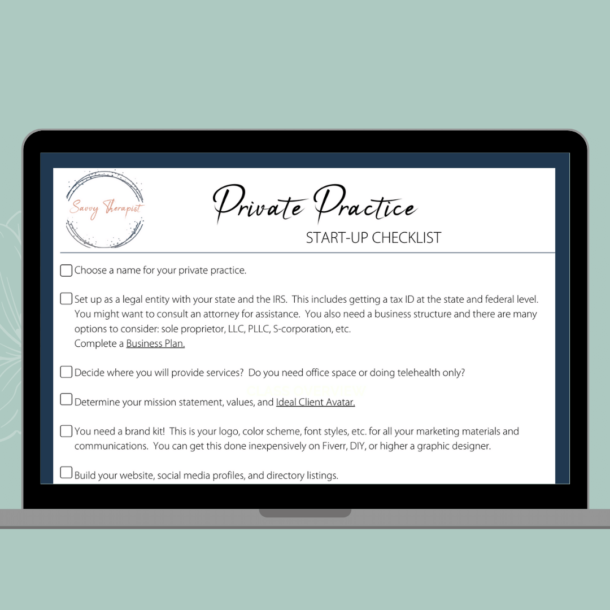Mental health therapists play a crucial role in helping individuals navigate their emotional challenges, but the demanding nature of the profession can lead to therapist burnout.
Burnout among therapists not only affects their well-being but also compromises the quality of care they provide to their clients. This blog post delves into the issue of therapist burnout, presents past and present research on the matter, and offers strategies for healing while maintaining a client caseload.
Understanding Therapist Burnout
Burnout among mental health therapists is a multifaceted issue, encompassing emotional exhaustion, de-personalization, and a reduced sense of personal accomplishment.
That sounds like clinical jargon and doesn’t really encompass what it feels like to experience this in real life and the shame you may feel if you relate all too well to the struggles presented in this blog.
The demanding nature of the therapist profession, exposure to clients’ emotional turmoil, and the burden of documentation and administrative tasks all contribute to therapist burnout.
An Honest Story of Therapist Burnout
I’ve found myself in the grips of therapist burnout that almost broke me physically/mentally and temporarily zapped my spark and creativity.
In fact, I only recently feel the veil of burnout has lifted. It took over several years to heal from the damage that burnout caused me both physically and emotionally. If I am totally honest, I am still dealing with some of the aftermath.
How it Started
I’d been working in a high pressure corporate mental health environment for over a decade. The job was demanding and stressful, and I’d been through several burnout cycles in that decade of employment. It had reached a new level of toxic, and I needed a way out.
The ownership was in constant conflict and soon the company decided to sell, and I found my ticket out by starting my own private practice rather than stay on with the new ownership.
After a tumultuous transition, I was finally my own BOSS.
A New Set of Problems
Soon after the dust settled on my private practice, I realized I had traded one group of problems for another. Instead of being in a toxic work environment, I had completely changed the way I lived and worked. The demands were different, and I have never been great with adjusting to big lifestyle changes.
I found myself on a path of churn and burn working way too many client hours trying to make ends meet. I had to take a significant pay cut to start a practice, and this caused continual stress about MONEY.
I had to work harder and longer and harder to make it possible, and I secretly worried I wasn’t cut out for owning a business. I went from a six-figure salary that was guaranteed if I showed up to perform the work, to only getting paid for face time with clients and putting in a lot of administrative time UNPAID.
Never ending Stress
Raising a family with four kids, inflation rising, continually feeling undercut by insurance contracts, client cancellations, issues with client payments, all the taxes…these only a tiny fraction of the worries that consumed me.
Even though I would gross more money in my private practice than I did in my corporate salary, I felt discouraged by the fact that after taxes and expenses, I was getting paid only 50% of what I made. I was breaking down several days a week, crying to my spouse that I couldn’t do it anymore. It was all too much. I felt like I was all used up. There was nothing left to give my family at the end of the day.
I suddenly realized I was in a DEEP burnout, and it was having a lot of negative consequences.
How it felt…
I wanted to hide and be in complete silence. I was opting out experiences in life because I was exhausted and overstimulated. I had digestive issues, nausea, migraines, and a host of other physical symptoms telling me I was unwell and needed to stop and re-evaluate my work/life balance. I felt terrible every.single.day.
The Healing Process
To start my healing process, I needed to commit to making changes to how I lived and worked. It took several years of my own therapy and coaching to recover, and regain the energy to reinvest in believing in myself as a private practice owner. Avoiding burnout is still an active process because I’m aware that my nervous system is still in early recovery.
I share this to end the stigma of admitting as a therapist you’ve become burnt out. We too can experience mental health issues and need the time and space to heal just as much as any other human being. Most of us end up therapists because of our experiences and/or desire to help others. We are not immune to facing the same challenges ourselves.
What the Research Says about Therapist Burnout
Therapist burnout is not new. Research studies such as Maslach and Jackson’s “The Measurement of Experienced Burnout” (1981) and Melamed, Shirom, Toker, Berliner, and Shapira’s “Burnout and Risk of Cardiovascular Disease: Evidence, Possible Causal Paths, and Promising Research Directions” (2006) emphasize the negative impact of burnout on a therapist’s physical and psychological health.
More recent studies published in the Therapist Wellbeing Report (2023) by Simple Practice, indicate that nearly 52% of therapists have or are currently experiencing professional burnout.
This means 1 of every 2 therapists is or has recently experienced BURNOUT! Not good for us therapists, and not good for clients either. It’s time we stop ignoring what we know to be true…there is an epidemic of burnout among therapists. The better question?? What can be done about it?
Let’s chat about some strategies that can help curb therapist burnout.
Strategies for Healing from Therapist Burnout
Self-Care as a Priority
- I know you hear these tips all the time, and you likely say these things to YOUR clients. Take the advice and use it! Practice the techniques you share with clients.
- Your physical and mental wellness needs to be a priority because your effectiveness as a therapist depends on it.
- Engage in self-care practices that align with your personal preferences and needs. This could include exercise, meditation, journaling, or simply taking time off.
- Utilize stress-reduction techniques like mindfulness meditation, deep breathing exercises, and progressive muscle relaxation.
Supervision and Peer Support
- Regular supervision sessions can provide a safe space to discuss challenging cases and receive guidance.
- Connecting with peers for support, whether through formal supervision groups or informal collaboration can help you feel understood and provide space to discuss common challenges in an affirming environment.
Setting Boundaries
- Establish clear boundaries regarding work hours and caseload.
- Avoid overextending yourself by taking on too many clients or working excessive hours as this usually creates a fast track to therapist burnout.
- Enforce boundaries with clients when you need to.
Clinical and Professional Development
- Attend workshops, conferences, or trainings that interest you and will benefit your practice of therapy
- Work on your “self as the therapist”
Seek Personal Therapy
- I firmly believe that therapists should be cool with seeking their own therapy when it’s needed.
- Working through our own struggles is healthy and should be encouraged as a part of regular self-care.
Delegate and Outsource
- Offload non-clinical tasks by delegating administrative work or outsourcing it to professionals. This allows you to focus on your core therapeutic work.
- Use practice management software to help you create efficiencies in your workflow and save time on administrative tasks.
Caseload Management
- Review your caseload and identify your maximum. If you are above that threshold consider adjusting it to a manageable size.
- Create working systems that help you manage treatment plan reviews, completing initial assessments, or staying up to date on documentation and closing summaries.
Conclusion
Burnout among mental health therapists is a prevalent issue that cannot be ignored. Research has consistently shown the adverse effects of burnout on both the therapist’s well-being and the quality of care they provide.
By understanding the causes and recognizing the signs of burnout, therapists can take proactive steps to heal and rejuvenate before it impacts clinical practice outcomes.
Remember, self-care is not selfish; it’s an essential aspect of being an effective and compassionate therapist.



THank you Amber. I so relate to this post. I am thre now. I have just committed to a lower caseload and no more late evening clients. I thik I will need some help to find my way back to feeling inspired and creative. It is so validating to read about your experience!
Many Thanks,
Sheila
I enjoy what you guys tend to be up too. This kind of clever work
and coverage! Keep up the good works guys I’ve incorporated you guys to my
personal blogroll.
Greetings! I know this is kinda off topic however , I’d figured I’d ask.
Would you be interested in exchanging links or maybe guest writing a
blog post or vice-versa? My website discusses a lot
of the same subjects as yours and I believe we could greatly benefit
from each other. If you’re interested feel free to
send me an e-mail. I look forward to hearing from you! Superb blog
by the way!